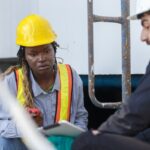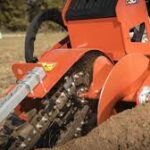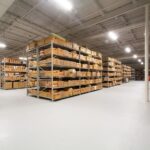It’s easy for confined places to become dangerous very quickly, even if they look safe at first. Think tanks, manholes, and bunkers are all places with special risks that people often don’t notice until it’s too late. It’s a sad fact that many accidents happen at work in these apparently safe places. To keep everyone safe on the job, it’s important to know what risks are in confined areas.
When it comes to getting around these places, the risks are high. Both companies and workers could get hurt or even die if they don’t get the right training and information. This blog will talk about why limited space training is more than just a task to be completed. It’s an important part of keeping your workplace safe that could save lives and keep your company’s good name. Let’s talk about ways to make it safer for everyone to work in small areas.

Why confined space training is important for both employers and workers?
Both companies and workers need to get a confined space training course. It makes people more aware of the special dangers that come with these places. Employers gain because they can be sure that safety rules are followed, which lowers their legal risks. Accidents are much less likely to happen when workers are properly trained. This protects lives and keeps work going. This training gives workers the skills to spot dangers before going into confined spaces. In dangerous scenarios, knowing what to do in an emergency can save your life.
When workers know what they’re doing, they have more confidence, which lets them do their jobs safely without fear or hesitation. This not only raises confidence but also makes people happier with their jobs in general. Putting money into limited space training shows that an organisation cares about safety at work, and this is felt throughout the whole company. When everyone puts safety first, it creates a mindset where health and happiness are more important than getting work done.
Different kinds of risks in confined spaces and how to spot them
Many dangers can hide in confined areas, so being aware is very important for safety. One risk that happens a lot is low oxygen levels. Some spaces, like tanks or bunkers, may not have enough air to breathe because other gases are moving through them. Another big problem is atmospheres that are toxic. Chemicals and fumes can build up and be very dangerous to your health. To be ready, your team needs to know what drugs they might come across.
There are also physical risks. People can slip, trip and fall in small spaces where they can’t move around easily. Before entering, these risks can be found by doing a full assessment of the surroundings. Also, engulfment risks happen when loose materials, like sand or grain, move around without warning. These signs need to be taught to workers so they can spot them early on. Knowing about these different kinds of confined space hazards gives teams the tools they need to stay safe while working in places that could be risky.
The right tools and safety precautions must be taken before entering confined spaces
When entering confined areas, it’s important to make sure you have the right gear and take the right safety measures. Having the right gear can make the difference between a simple job and one that could put your life in danger. First, the most important thing should be personal safety equipment (PPE). This includes, if needed, hats, gloves, eye protection, and breathing gear. For the goal of keeping workers safe, each piece of equipment has a specific job to do. The next part is tracking technology. Gas monitors are very important for finding dangerous gases that people might not be able to sense on their own. The air quality is constantly checked to make sure that any changes that could be dangerous are found quickly.

It’s just as important to learn how to use all of your safety gear correctly. Workers need to know how to properly use their PPE and be aware of what it can’t do. If this equipment is checked regularly, it won’t break down at crucial times. It is required to do full risk assessments before entering any confined area. Every job place has its own conditions, and teams can better prepare if they know what those are ahead of time. Setting rules for how team members should talk to each other also makes things a lot safer. Two-way radios or other reliable methods keep everyone in the space up to date on what’s going on.
By putting safety first and making sure workers have the right tools, companies make it possible for workers to feel safe doing even the most difficult jobs in small spaces. Safety isn’t just a list of things to do; it’s a way of life that must permeate all aspects of work done in these dangerous places.
















